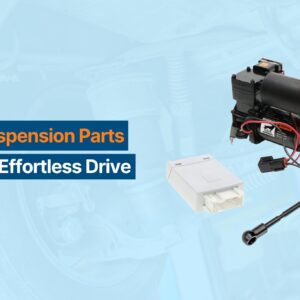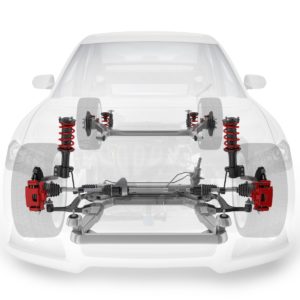Thanks to your vehicle’s suspension system, you can enjoy a smooth and comfortable ride even as you drive over small rocks, holes, and bumps on the road.
The suspension system absorbs any shocks from the road, keeping your tires constantly on the ground. However, constantly driving in rough road conditions will eventually take a toll on your suspension and throw your wheels out of alignment.
Suspension Parts That Affect Alignment
Most suspension parts affect alignment, which means you’ll likely need to realign your wheels after repairing the suspension system. Here are examples of suspension parts and how they can directly affect alignment:
Tie Rods
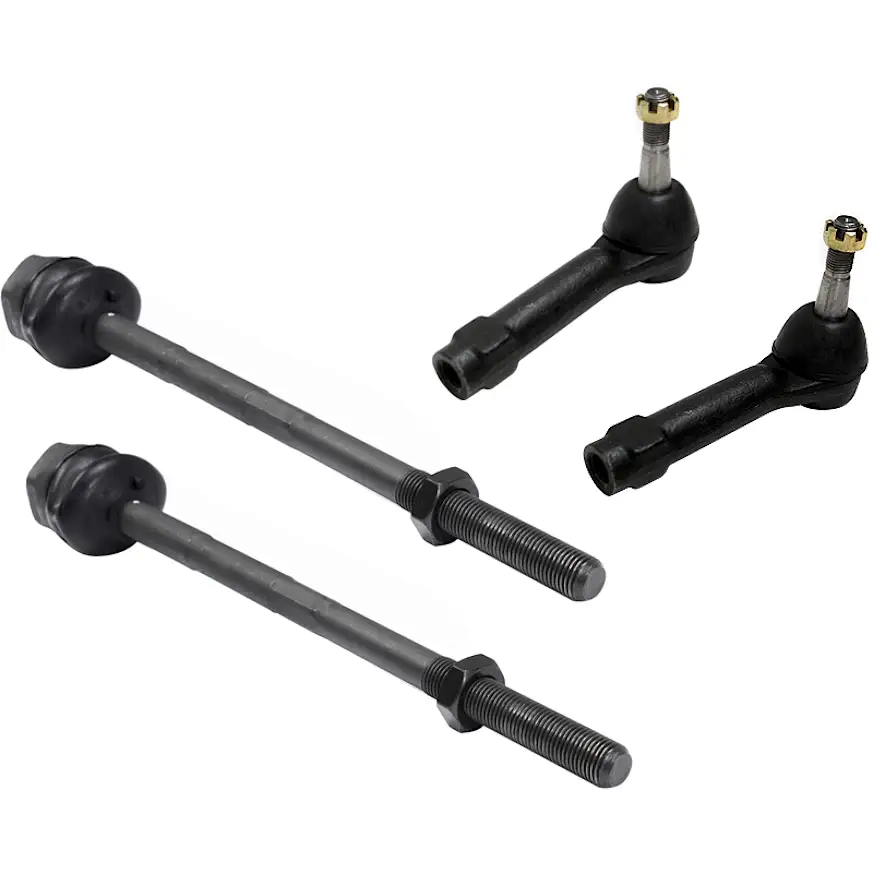
Tie rods connect the steering rack to the steering knuckles, allowing the front wheels to pivot when you turn the steering wheel. Most vehicles have one inner and one outer tie rod, each with an adjustable sleeve that allows changes to its overall length.
When the tie rod malfunctions, it can throw off your vehicle’s wheel alignment or toe angle, which refers to how far in or out the front wheels are angled.
Ball Joints
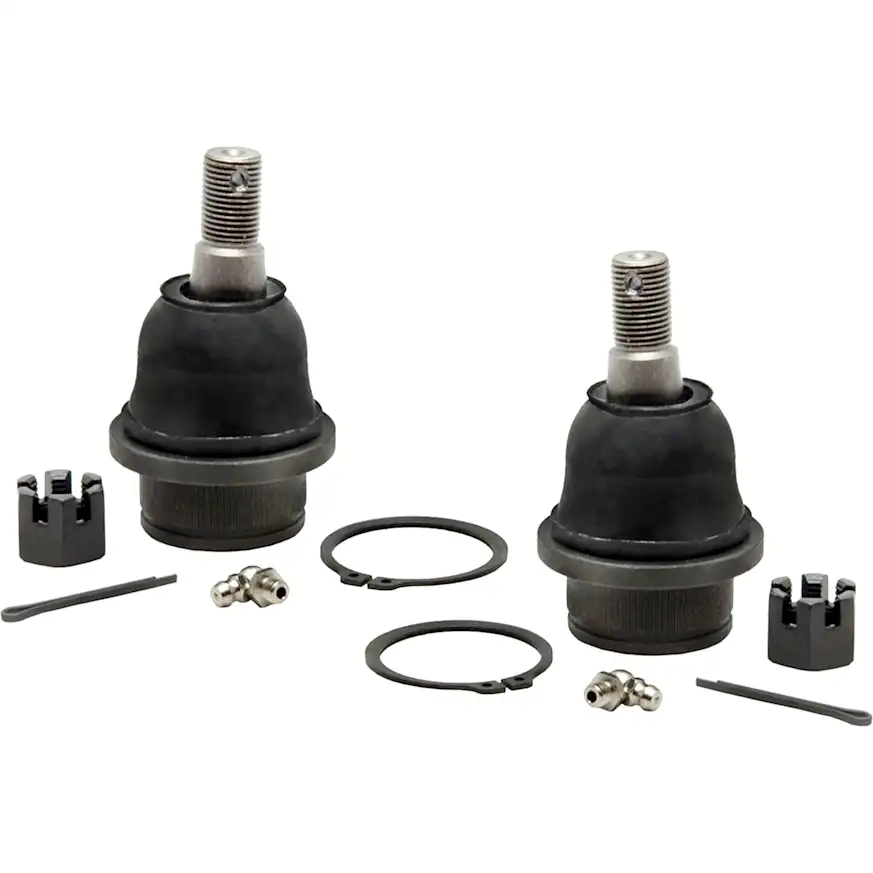
Ball joints are responsible for securing various suspension components together, such as the stabilizer links, track control arms, and tie rod ends. Over time, these joints can wear and lead to play within the ball pin. This can result in excess vibration, poor steering, and misalignment.

Shock Absorbers and Struts
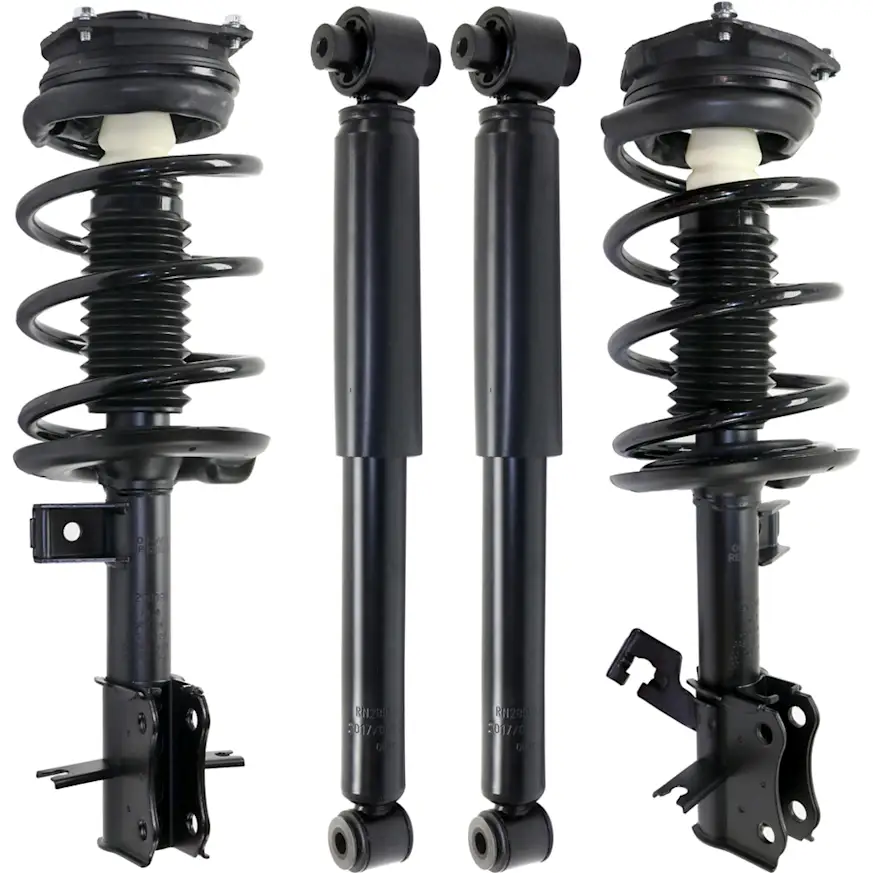
As its name suggests, a shock absorber stops your vehicle from bouncing by absorbing vibrations as you drive. Shock absorbers are located behind the tires, where they work together with a separate spring.
Similarly, a strut refers to a combined shock and spring assembly that is directly attached to the wheel. Struts absorb vibrations while keeping the tire in position.
If the shock absorber or strut fails, it can create a knocking or rattling noise and cause other suspension parts to fail. Replacing struts can also throw your vehicle’s alignment off, which is why most mechanics recommend getting a tire alignment after you install a new strut.
Everything Else
Given how each suspension part can affect your vehicle’s handling, it’s safe to say that almost every component of your suspension system can also affect its alignment. Bushings and other small parts can fail, causing your vehicle to ride differently.
What Is the Suspension System?
To put it simply, the suspension system is the framework sitting between the tires and the car body. It keeps your tires in constant contact with the road, dampens bumps and vibrations, and provides wheel support.
If your suspension system is in bad condition, your car can bounce off the ground, causing you to lose control of your vehicle.
What Is a Car Alignment?
Also known as tire alignment, wheel alignment refers to the adjustment of the wheels’ angles. This service ensures that the wheels are perpendicular to the ground and parallel to each other, preventing premature tire wear and poor handling.
How Are Suspension and Alignment Related?
Suspension problems and wheel alignment issues typically go hand-in-hand. Driving over potholes, constant exposure to moisture, and other similar scenarios that cause suspension damage can also affect tire alignment. In most cases, faulty suspension parts, such as worn-out shocks, can also lead to misalignment.
What Causes Suspension Damage?
Most suspension systems last around 50,000 to 100,000 miles, but constant exposure to rough roads can cause various suspension parts to fail. Here are the common causes of suspension damage to look out for:
- Driving over deep potholes and rough roads can break various suspension parts.
- Over time, shocks, struts, and other components can wear and cause suspension issues.
- Misaligned wheels put uneven stress on various suspension parts, causing them to wear.
- Overloading the vehicle can strain the suspension system.
- Exposure to road salt and moisture can cause corrosion and rust.
- Colliding with another vehicle or object can knock suspension parts out of place.
Symptoms of a Bad Wheel Alignment
If your vehicle needs an alignment, you’ll usually notice a few warning signs. Here are the symptoms of misalignment:
- Vehicle pulls to one side
- Uneven tire wear
- Crooked or off-center steering wheel
- Excessive vibration
- Steering wheel doesn’t return to the center position
Worn steering and suspension components can also cause similar issues, so it’s best to ask a mechanic to perform a thorough inspection to rule out all the possible causes.
How To Prevent Suspension and Alignment Issues
Regular maintenance is the best way to prevent misalignment and suspension issues. While the exact service interval can vary depending on your vehicle’s year, make, and model, most manufacturers recommend getting a wheel alignment check every 6,000 miles.
A wheel alignment typically costs anywhere from $50 to $170, but it’s a small price to pay compared to replacing damaged suspension components.
Any information provided on this Website is for informational purposes only and is not intended to replace consultation with a professional mechanic. The accuracy and timeliness of the information may change from the time of publication.



